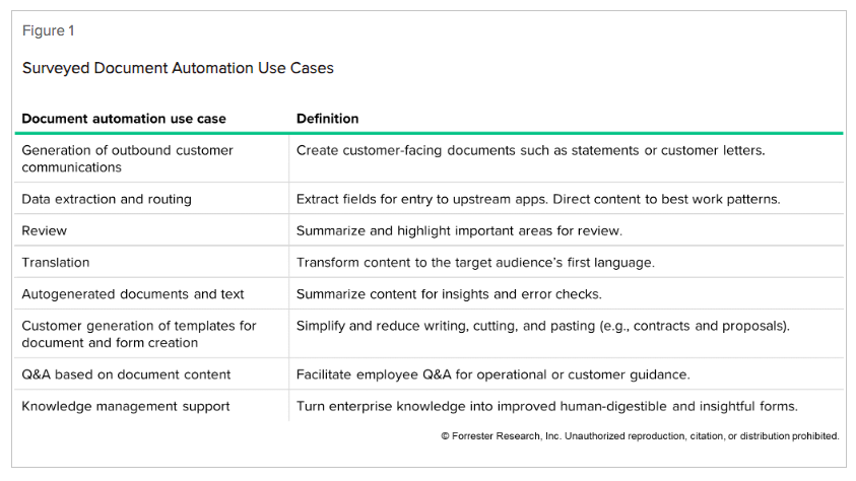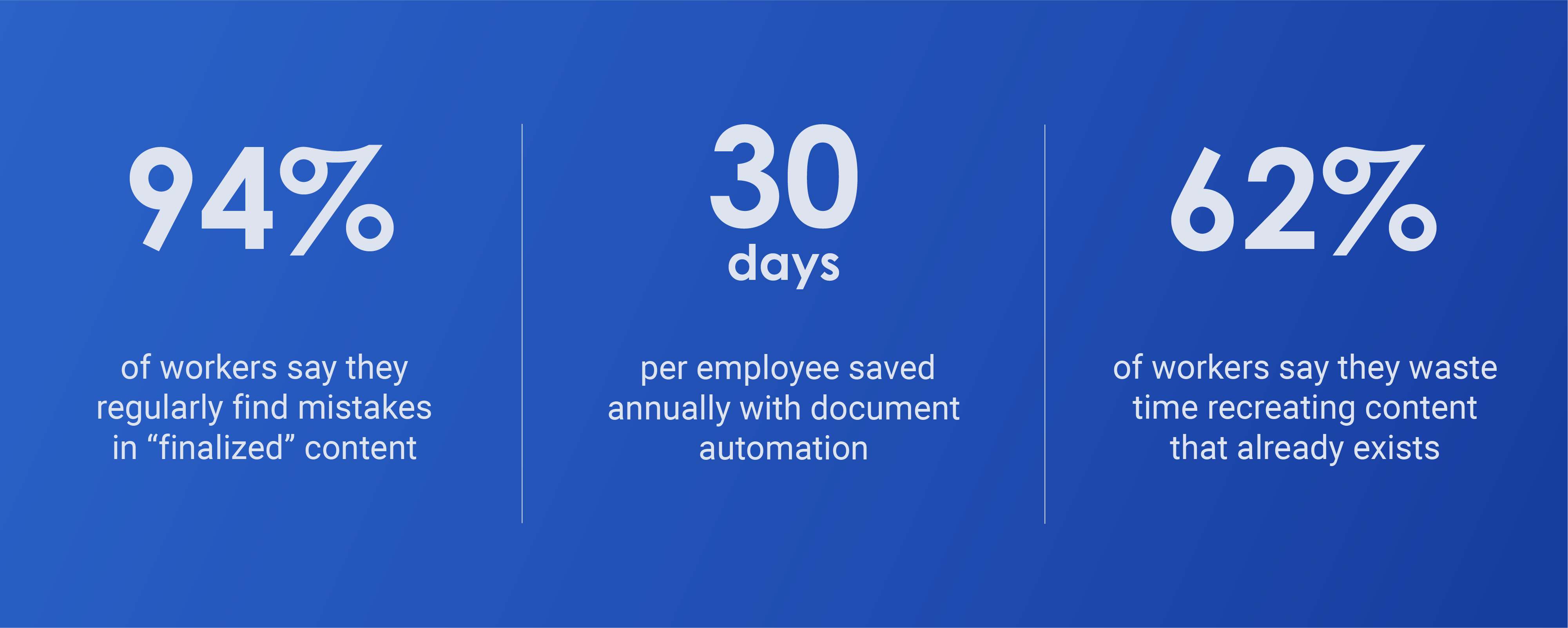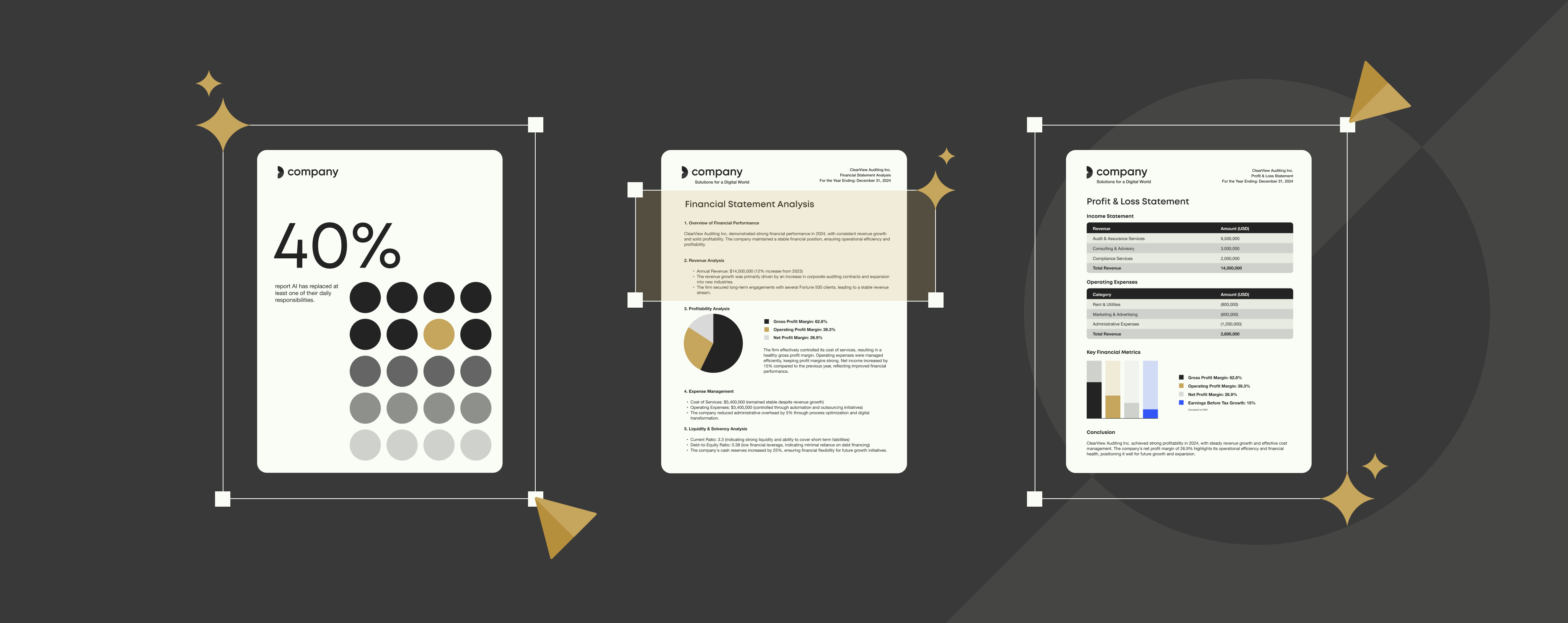Document automation: How AI & LLMs will change the game for enterprises

5 key takeaways from Forrester’s LLMs Trends Report – and how to apply them in your company for maximum ROI.
In a world where time is money and accuracy is everything, how are industry leaders leveraging AI and LLMs to stay ahead?
Forrester’s May 2024 report, “LLMs Promise Document Automation Glory”, sheds light on the transformative potential of AI and LLMs in document automation. However, despite the clear advantages, decision-makers have shown “sluggish adoption.”
The good news? The report not only highlights the ROI potential of LLM-powered document automation, but also offers actionable insights on how to overcome the barriers to implementation.
In this blog, we’ve summarized the key insights from this report, so you can quickly understand the strategies shaping the future of document automation.
We’ve added actionable insights to share our expertise in document automation, and how your company can ensure a fast and smooth implementation.
AI
What is an LLM?
An LLM, or Large Language Model, is an advanced artificial intelligence system designed to process, understand, and generate human language.
These models are trained on massive datasets and can perform a wide range of language-related tasks, such as answering questions, writing content, and translating text, by predicting and generating text based on the input they receive.
Our 5 key takeaways from Forrester’s LLM Trends Report
1. 8 use cases and their ROI
Forrester’s research highlights the substantial benefits AI can bring when applied to specific, well-defined use cases in document automation. In a survey of 43 global business technology decision-makers, there was strong optimism about AI’s potential to:
- Increase employee satisfaction
- Reduce time spent on manual tasks
- Cut costs
- Enhance customer experience
Forrester identified eight key areas where AI-driven document automation can significantly impact:

Focusing on these use cases enables enterprises to streamline operations, improve efficiency, and achieve better outcomes.
2. Knowledge management (KM) shows the highest transformational value
Incorporating LLMs into KM systems can transform a traditionally cumbersome process into an efficient, impactful function. By leveraging LLMs, organizations can simplify the capture, storage, and retrieval of critical knowledge, making it more accessible and actionable. This leads to faster, more accurate decision-making and significantly boosts overall efficiency.
Deploying LLMs in KM is seen as relatively straightforward, offering substantial benefits with minimal implementation challenges.
3. Data extraction ranks as the second-highest transformational value
Data extraction is the second most impactful use case for ROI in Forrester’s analysis. By integrating AI and LLMs, businesses can automate the extraction of critical information from documents, emails, and forms, significantly reducing manual effort and processing time.
LLMs also enhance legacy systems, expanding their capabilities beyond traditional indexing and data entry – making data extraction a powerful tool for driving ROI.
4. AI-driven customer communications
Forrester points out that many businesses still use outdated customer communications management (CCM) tools, but AI-driven solutions, including LLMs, are set to revolutionize this area.
Traditionally, creating and updating templates required specialized skills and considerable manual work. With generative AI, these processes are now streamlined, automating content creation and reducing workloads.
Schneider Electric has already seen benefits by incorporating Templafy into their workflow, simplifying proposal generation, and significantly reducing the time and effort required by their teams.
“In the future, our commercial staff will have less work to do. They will put in a prompt and get the exact offer they need. We use Templafy to pull sections into a template today. Its latest product will have LLM support.” – Jacques Denis, cybersecurity tendering engineer, Schneider Electric
5. The challenges of document automation – and how to mitigate them
Forrester’s report outlines several key challenges in implementing LLMs for document automation. However, with strategic approaches, these obstacles can be effectively managed to ensure successful adoption and deployment. Here are the main challenges and how to address them.
- Data security concerns
Businesses are wary of exposing sensitive business data, especially with public AI models. To mitigate this risk, choose a platform that prioritizes enterprise-grade security and privacy. Look for solutions that offer robust encryption, stringent access controls, and adhere to industry standards like ISO 27001 and SOC 3. - Risk in end-to-end automation
Automating end-to-end workflows introduces risks, particularly in complex areas like outbound communications. Start with lower-risk segments and gradually expand automation to build confidence in the system’s reliability – while maintaining human oversight where it’s needed most. - Trust and reliability
Building trust in AI outputs is crucial, especially when LLMs are involved in critical decision-making. Forrester suggests starting with less critical use cases to validate AI accuracy and reliability. As the system proves consistent, you can apply it to more complex tasks, ensuring it aligns with your organization’s needs and standards. - Budget and resource allocation
Implementing LLMs requires significant financial and human resources. Forrester recommends starting with smaller pilot projects that require less investment but clearly demonstrate benefits. This approach helps justify further investment in AI, allowing for scalable growth as your business becomes more comfortable with the technology. - Internal skill development
A lack of internal expertise is often a barrier to successful AI adoption. Forrester emphasizes the importance of investing in targeted training programs and involving AI experts during the initial stages. Over time, developing a skilled internal team will be crucial for sustaining and expanding AI applications within your organization.

Based on a Templafy survey of 2,000+ employees from around the globe.
Ready to transform your document automation?
Templafy is leading the way in document automation, offering a powerful platform that seamlessly integrates with tools like Microsoft 365 and Google Workspace. Templafy simplifies and streamlines your entire document creation process, ensuring consistency and compliance.
Ready to see the difference? Book a demo today and discover how Templafy can transform your document processes, making them faster, smarter, and more effective.


